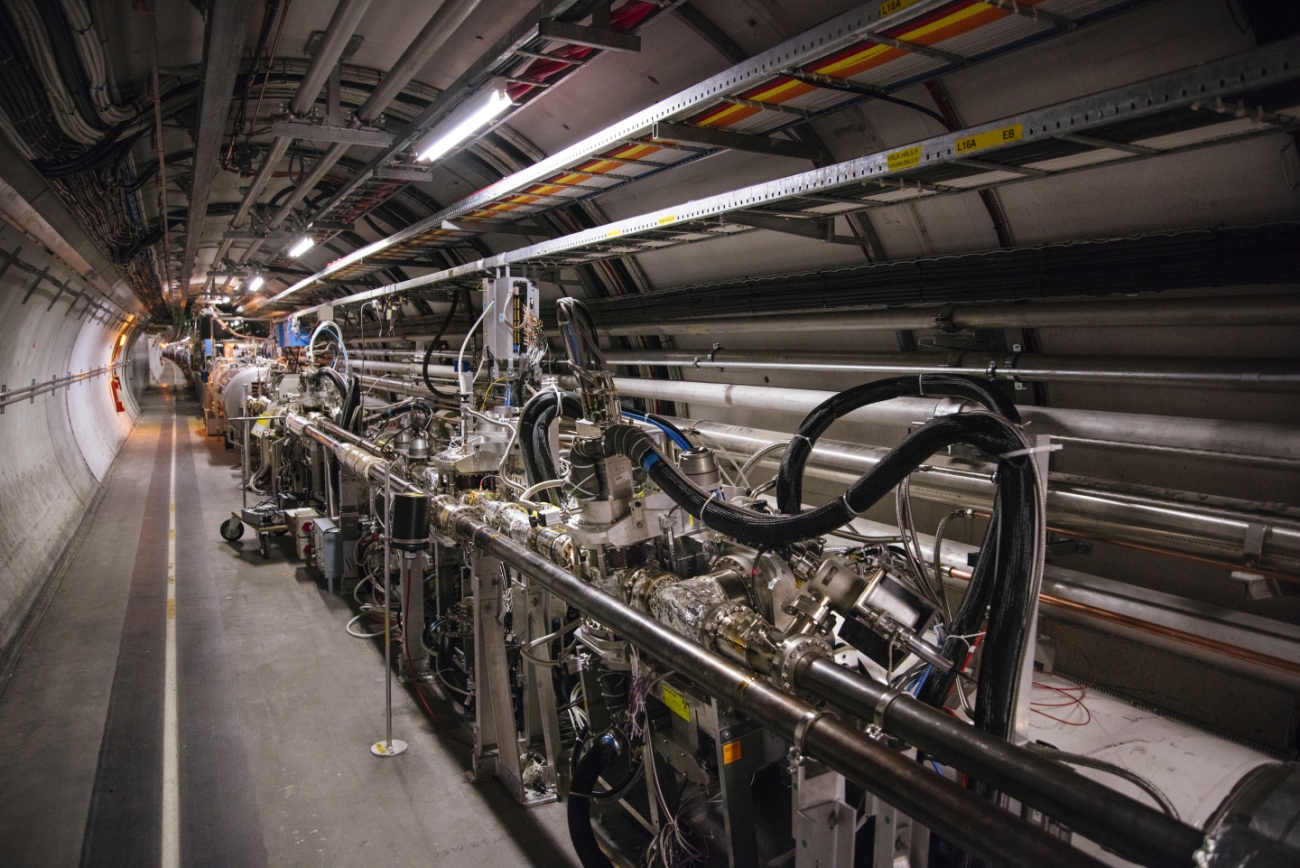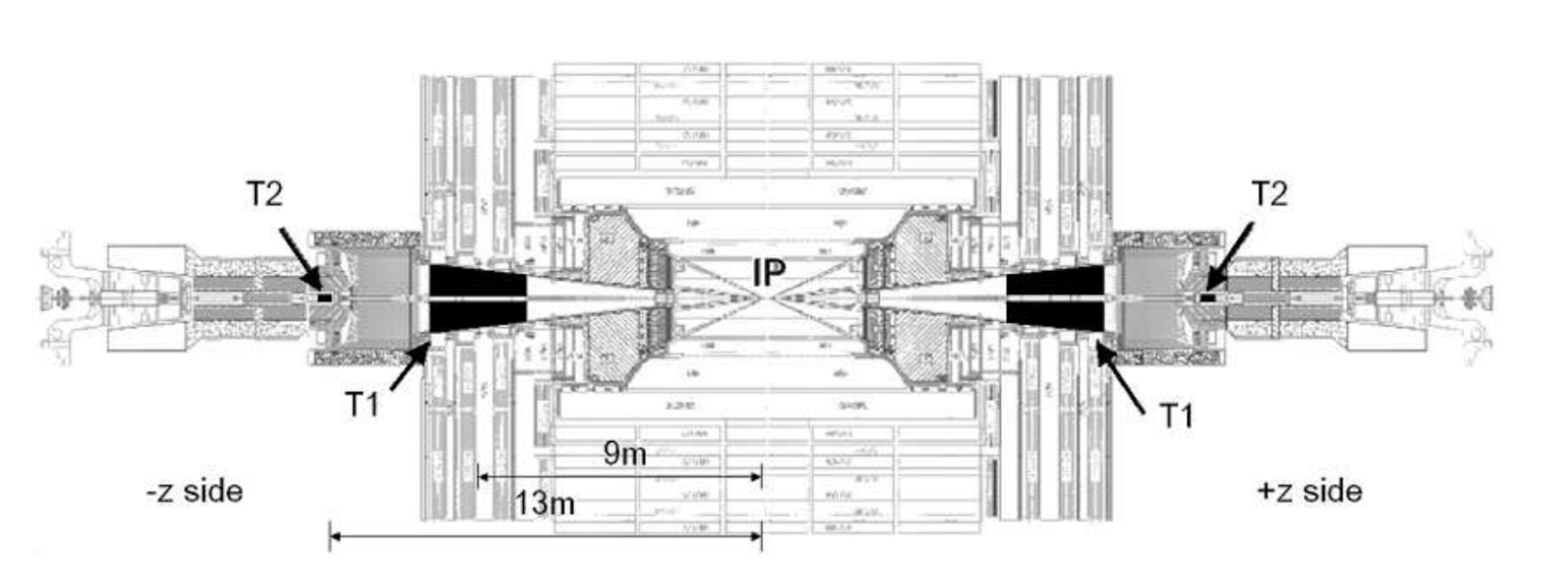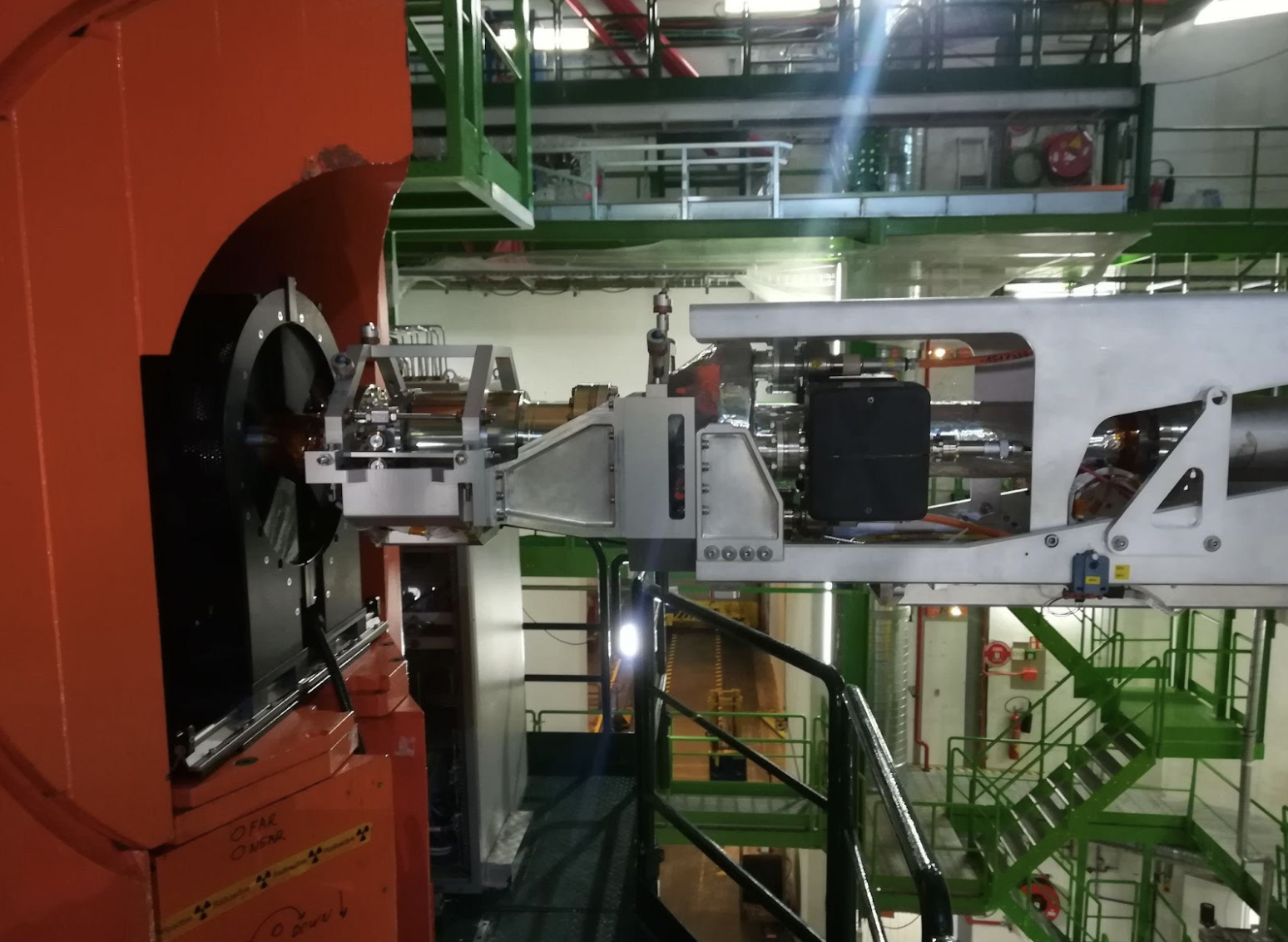TOTEM collaboration prepares to explore new territories in forward physics

A new period of data taking began at the world’s most powerful particle accelerator, the Large Hadron Collider (LHC), after more than three years of upgrade and maintenance work. This presents new opportunities for measurements to the LHC experiments including the smallest experiments at the LHC like TOTEM, LHCf, MoEDAL as previously reported. In this issue we focus on the TOTEM experiment, and its plans for the upcoming Run 3 of the LHC. Following a series of upgrades, the TOTEM collaboration is ready for new precise measurements of proton-proton interactions, shedding more light on proton structure and contributing to other searches for new physics by the LHC experiments.
The three pillars of its physics programme are: an accurate measurement of the total proton cross section, a measurement of elastic scattering in a wide kinematic range and in-depth studies of diffractive processes. This challenging physics programme brings special requirements for the detector apparatus. In particular, large pseudorapidity coverage – to detect most fragments from inelastic collisions and excellent acceptance for outgoing diffractive and elastic protons. To accomplish this task, TOTEM comprises three sub- detectors: in the Run 1 and Run 2 there were installed inelastic telescopes T1 and T2 and a system of Roman Pots (RP) for proton detection both of which are discussed below in this article.
Before Run 3, the inelastic detectors were damaged by the high radiation environment. Thus, the T1 detector has been removed while the T2 detector has been substituted with a very simple plastic scintillator counter telescope. For the TOTEM collaboration, one of the primary goals during Run 3 is the measurement of the inelastic processes during the proton-proton collisions at the new LHC energies. The new T2 detector will be installed inside the CMS experiment a few days before the special beam to achieve an efficiency of 97% in recording any kind of inelastic collision that takes place in P5. As Nicola Turini, TOTEM Deputy Spokesperson, who pioneered the design of the old gaseous detectors, explains: “Gaseous detectors offer sensitivity to larger areas allowing to cover a wide angle range with good spatial resolution for tracking purposes while in addition they offer robust radiation tolerance capable of withstanding the harsh environment of the CMS detector forward region where they are installed. However, after many years, they got enough damage that they had to be substituted. So, a very cheap detector has been developed for T2 and its design is such that it can be installed and removed very fast for the short run period".
The two different types of gaseous detectors previously installed were: cathode strips chamber (CSC) for the telescope T1 and gas electrons multiplier (GEM) chamber for T2. The first telescope (T1) was centered at 9m on both sides of the interaction point and covered angles between ≈ 18mrad and ≈ 90mrad. The second telescope (T2) was centered at 13.5m on both sides of the interaction point and it covered θ angles between ≈ 3mrad and ≈ 10mrad.

Figure 1: View of the inelastic forward trackers T1 and T2 inside the CMS detector.
The new T2 detector is made with plastic scintillator tiles read through optical fibers and will cover exactly the same acceptance of the old detector. TOTEM will also continue looking at the patterns from elastic scattering, in which fast-moving hadrons meet and exchange particles without breaking apart. This means that protons can be detected very far from the interaction point, at distances of around 220 meters away, with the sub detectors, called Roman Pots. At the LHC, the scattering angles of the protons are quite small thus requiring placing the two sub-detectors very close to the circulating beam. Turini continues: “TOTEM is equipped with two types of Roman Pots detectors, placed horizontally and vertically, which correspondingly can see the inelastic and elastic protons that escape from the beam pipe”.

Figure 2: Photo of the new TOTEM T2 detector installed in the CMS Cavern. Credits: TOTEM collaboration.
Moreover, the edgeless silicon strip detectors installed in the Roman Pots, allow the TOTEM experiment to detect protons elastically scattered at very small angles from the beginning of LHC, close to the 10σ envelope of the LHC beam. “This detector is fabricated with standard planar technology, reaches sensitivity 50 μm from the cut edge and can operate with high bias at -25o C, offering very good radiation tolerance”.
Measuring the proton elastic scattering at LHC calls for a special beam optics that would minimize the transverse momentum. In other words, the protons should travel in parallel trajectories, as squeezing the proton beam adds transverse momentum. This is defined by the LHC operators via a special parameter called β*. The higher the beta star, the more de-squeezed the beams are, and the more parallel the beams are when they arrive at the interaction point. “We are looking for special runs of the LHC with high values of the β* parameter with a value of a few kilometers, in which case the protons are not squeezed in the beam. The nominal β* that is used in LHC runs has a value of 0.4 meters but for this special run of TOTEM we reached up to β*= 2.5 km. In other words we get a highly monochromatic beam“ says Turini and continues “With such small values of momentum transfer we are actually able to see the Coulomb scattering where momentum transfer happens via electromagnetic interactions”. The contribution of the electromagnetic interaction (“Coulomb” scattering) interferes with the nuclear part of the elastic interaction. Studying this interference zone can shed light on the internal structure of the protons, and on which part of the protons, either the peripheral or the inner part, is actually responsible for the elastic scattering process.
TOTEM has performed a detailed study of the region of low transferred momentum of the elastic scattering, that is, when the two protons barely interact and the scattering angles are very small. “These measurements allowed a very precise measurement of the cross-section of proton interactions. TOTEM has performed these measurements with different beam energies scanning the range from 900 GeV in 2018, up to 7 TeV, 8 TeV, 13 TeV and now preparing for measurement at the 13.6 TeV. Based on these data, TOTEM in collaboration with the DØ collaboration at the Tevatron collider at Fermilab, have announced the discovery of the odderon – an elusive state of three fundamental particles called gluons that was predicted almost 50 years ago. At lower energies, differences in proton–proton vs proton–antiproton scattering are due to the exchange of different virtual particles made only by gluons. At multi-TeV energies, colourless proton interactions are expected to be mediated purely by gluons. In particular, elastic scattering at low-momentum transfer and high energies has long been explained by the exchange of a pomeron – a “colour-neutral” virtual glueball made up of an even number of gluons. In 2018, TOTEM had reported measurements at high energies that could not easily be explained by this traditional idea. Instead, a further QCD object seemed to be at play, supporting models in which a three-gluon compound, or one containing higher odd numbers of gluons, was being exchanged. The results were sufficient to claim evidence for the odderon, although not yet its definitive observation. By combining forces, the TOTEM and DØ teams compared LHC proton–proton data (recorded at collision energies of 2.76, 7, 8 and 13 TeV and extrapolated to 1.96 TeV), with Tevatron proton–antiproton data measured at 1.96 TeV, and again found evidence for the odderon. When the teams combined the result with measurements at different scattering angles at 13 TeV by the TOTEM collaboration, the significance of the result was boosted to the discovery level.
Regarding the next steps, TOTEM is planning to measure the proton-proton cross section at 13.6 TeV later in 2023. For this measurement, the TOTEM inelastic detector, comprising the new T2 telescope, should be inserted inside the CMS magnet in front of the hadronic forward calorimeter. Presently the detector is sitting at Meyrin ready for mounting following a series of successful tests in CERN’s North Area and calibration with cosmics. TOTEM and CMS have established the CMS-TOTEM Proton Precision Spectrometer (CT-PPS) as a joint project following the signature of an MoU in 2016. CT-PPS adds precision proton tracking and timing detectors in the very forward region on both sides of CMS at about 200m from the IP to study central exclusive production (CEP) in proton-proton collisions. This measurement provides a unique method to access a variety of physics topics at high luminosity LHC, such as new physics via anomalous production of W and Z boson pairs, high-pT jet production, and possibly the production of new resonances. The CT-PPS is a magnetic spectrometer that uses the LHC magnets between the Interaction Point (IP) and detector stations at ∼ 210m from the IP on both sides, to bend protons that have lost a small fraction of their momentum out of the beam envelope so their trajectories can be measured. It consists of a silicon tracking system to measure the position and direction of the protons, and a set of timing counters to measure their arrival time. Thanks to its design it allows the reconstruction of the mass and momentum as well as the z coordinate of the primary vertex of the centrally produced system, irrespective of its decay mode.
The long-standing expertise of TOTEM has been brought to the Proton Precision Spectrometers project with the new power of discovery. Furthermore, TOTEM offers useful data to the LHC operators on beam displacement that allow the proper calibration of the machine. “We have a very precise measurement of what happens in the machine and we offer this feedback to the machine”- Nicola Turini concludes.
